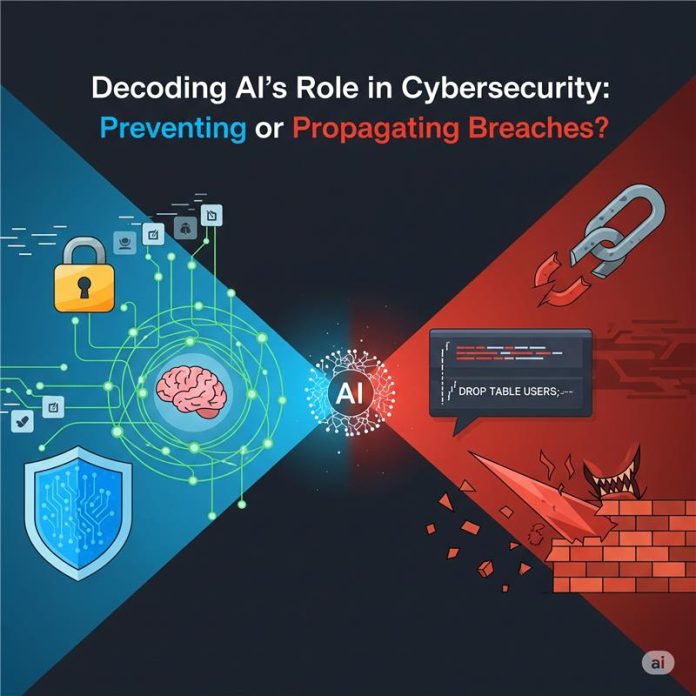In this post, I will answer the question – is AI in breach detection a threat or safeguard or both?
With the advancement of technology, AI has entered the board as both a powerful ally and a potential wildcard. Moreover, security threats are increasing and becoming harder to detect as attackers find new ways to commit cyber crimes.
While traditional pentesting and vulnerability scanning methods are good at only detecting these threats, they are not able to identify and mitigate sophisticated security threats.
And that’s the reason Artificial Intelligence (AI) and Machine Learning (ML) are being utilized in the cybersecurity industry to identify security threats in real-time. This helps organizations to strengthen their defense against all kinds of fraud and threats.
So where does the truth lie? Is AI the ultimate safeguard in breach detection, or are we going to consider it as a double-edged sword?
Let’s discover this paradox.
Table of Contents
Why We Need AI in Modern Threat Detection?
Cybersecurity is a war fought at machine speed. Attackers are deploying the latest methodologies and automation, including polymorphic malware and AI-driven social engineering, to bypass legacy defenses. Meanwhile, developers and security experts are wasting their efforts with a huge number of false positives. This means that human analysts can’t keep pace.
Here, let’s welcome AI – Artificial Intelligence.
AI has become a cornerstone of modern cybersecurity, empowering teams to tackle a wide range of threats with speed and precision. By automating accurate incident response processes, AI helps organizations keep pace with the fast-changing threat landscape and efficiently manage massive streams of threat intelligence.
An AI-powered vulnerability scanner is built to counter evolving attack tactics that are often hard to identify and neutralize, especially those targeting expanding vectors like IoT devices, cloud environments, and mobile platforms. The prime objective is to manage the growing scale and speed of cyberattacks, with a strong focus on combating ransomware.
If we look at the example, unlike rule-based systems that rely on predefined signatures, AI learns from behaviour. It can spot subtle deviations, like a user logging in from an unusual location at 3 am, or a server suddenly sending gigabytes of data to an unknown IP, that might slip past traditional firewalls and SIEMs.
In a nutshell, AI doesn’t just react, it anticipates.
How AI is Revolutionizing Breach Detection?
Rapid Real-Time Breach Detection
When we talk about traditional scanners or breach detection tools, they generally function on predefined patterns that lack the adaptive dynamic nature of modern cyber attacks. On the other hand, AI-powered detection tools, especially ML models, learn from vast datasets and can instantly flag anomalies that deviate from baseline behavior.
AI helps you enable faster detection and pattern recognition, and reduce alert fatigue. In fact, report shows that, 63% of security breaches are detected more quickly when AI is integrated into cybersecurity systems.
Adaptive Threat Intelligence
Having said that earlier, AI understands human patterns and learns from them. With a rise of new attack vectors, AI-driven vulnerability detection tools adjust in near real-time and help you mitigate them.
This adaptability in the digital world is a game-changer with zero-day detection, threat hunting, and automated remediation.
As a result, it gives you a more responsive, resilient, and context-aware security posture.
Phishing and Social Engineering Defense
AI now detects sophisticated phishing emails by analyzing linguistic patterns, sender behavior, and embedded links. NLP – Natural Language Processing models can even identify “spear phishing” attempts that mimic a CEO’s writing style with utmost accuracy.
In 2023, organizations adopting AI-driven security and automation reported significantly lower breach costs. IBM highlighted that firms using AI and automation reduced breach costs by an average of $1.76 million—a savings that emphasises not only efficiency but organizational survival. As noted in a comprehensive overview of phishing attack statistics, these trends underscore why advanced AI is increasingly vital for cybersecurity.
AI as a Threat: When the Tools Become Weapons
Let’s consider the other side of AI in threat detection. It’s also a tool for hackers, insiders, and adversarial AIs.
Blind Spots in Training Data
AI is only as good as the data it learns from. If training datasets are biased or unbalanced, AI can either miss key threats or incorrectly flag benign behavior.
This becomes very dangerous when:
- False negatives allow actual breaches to pass undetected.
- False positives overwhelm security teams, leading to alert fatigue.
In fact, the principle “garbage in, garbage out” is true in AI security.
Model Poisoning and Evasion
Here’s the twist: cybercriminals are using AI too.
Attackers can “poison” AI training data to corrupt detection models. For example, flooding a system with fake benign traffic to make malicious activity appear normal. Or using evasion techniques to slightly alter malware code so it bypasses AI-based detection—like a digital chameleon.
Automation of Attacks
AI doesn’t care who’s using it. Tools that automate attack discovery, credential stuffing, or lateral movement are powered by the same algorithms defenders use. This means hackers can scale their operations and evade traditional security at unprecedented speeds.
So, Is AI a Threat or a Safeguard?
The answer is not simply Yes or No. AI is a force multiplier, amplifying both defense and offense. Its value depends entirely on how we deploy, monitor, and govern it.
Think of AI like fire: used wisely, it heats homes and powers engines. Used recklessly, it burns everything down.
READ ALSO: How Companies Can Streamline Operations Through Smart AI Solutions
How to Choose the Right Side of AI?
Let’s follow some principles while harnessing AI without falling into its traps.
Adopt a “Human-in-the-Loop” Model
AI should assist, not replace. You should keep skilled security analysts in the decision chain, especially for high-risk alerts. Use AI to filter noise, but let humans interpret intent and context.
Invest in Explainable AI (XAI)
Black-box models are dangerous. If an AI flags a breach but can’t explain why, how can you trust it? Demand transparency. Use models that provide audit trails and confidence scores.
Secure the AI Itself
Your AI-powered tools are the prime targets for attacks. Protect training data, model integrity, and inference pipelines with zero-trust principles. Monitor for signs of model tampering or data poisoning.
Combine AI with Other Defense Mechanisms
Don’t rely too heaviliy on AI. Layered security approaches, such as Zero Trust architecture, MFA, MCP Gateways, and network segmentation, should coexist with AI-driven breach detection.
Final Thoughts
In a nutshell, AI in breach detection is all about balance. It’s not a question of threat vs safeguard. With the right checks and guardrails, AI can transform cybersecurity from reactive to predictive, helping teams identify breaches before they become headlines.
But like any powerful tool, its impact depends on how we wield it.
So, ask yourself: Is your AI strategy building resilience, or just buying time?
INTERESTING POSTS
- How To Safeguard Your Business From Cyberattacks
- Identity Theft: How To Safeguard Your Personal Information
- Exploring Model Monitoring Tools and Platforms for Effective Deployment
- The Intersection of AI and Privacy: Safeguarding Personal Information in the Age of Intelligent Systems
- Why Is Cybersecurity In Financial Services Important?
- 6 Strategies To Make Your Model Serving API More Robust With Testing & Analysis
About the Author:
Daniel Segun is the Founder and CEO of SecureBlitz Cybersecurity Media, with a background in Computer Science and Digital Marketing. When not writing, he's probably busy designing graphics or developing websites.










